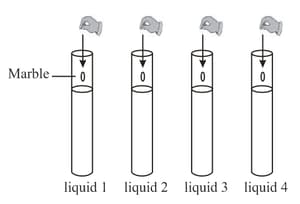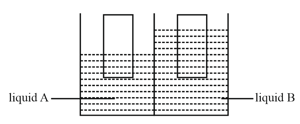NCERT Solutions for Chapter: Gravitation, Exercise 1: Exercise
NCERT Science Solutions for Exercise - NCERT Solutions for Chapter: Gravitation, Exercise 1: Exercise
Attempt the practice questions on Chapter 10: Gravitation, Exercise 1: Exercise with hints and solutions to strengthen your understanding. Science Textbook of Competency Based Questions for Class IX solutions are prepared by Experienced Embibe Experts.
Questions from NCERT Solutions for Chapter: Gravitation, Exercise 1: Exercise with Hints & Solutions
The moon moves around the earth in a fixed orbit. What makes the moon move in the fixed orbit?
Why is it essential for deep-sea diving vessels to be built of thick sheets of steel?
Peter pours the same amount of four different liquids in separate cylinders. The cylinders are of the same size. He then drops a glass marble in each of the four cylinders.

Peter notes the time the marble takes to reach the bottom of each cylinder. The table shows the results.
| Liquid | Time taken by the marble to reach the bottom of the cylinder (in seconds) |
| Liquid 1 | |
| Liquid 2 | |
| Liquid 3 | |
| Liquid 4 |
Which liquid exerted the most upward force on the marble?
Four different objects are placed in a tumbler of water. Which object will displace more water than its own weight?
Which of the following statement(s) is/are wrong?
A piece of paper and a cricket ball is dropped from a particular height. The piece of paper has taken a long time to reach the ground than the cricket ball because
Two objects similar in all respects are floating in two liquids A and B as shown in the figure. If is the density of liquid A, is the density of liquid B and is the density of the object, which among the following is the correct relation between the densities of the objects and the liquid?

The mass of a body of weight is______ .
